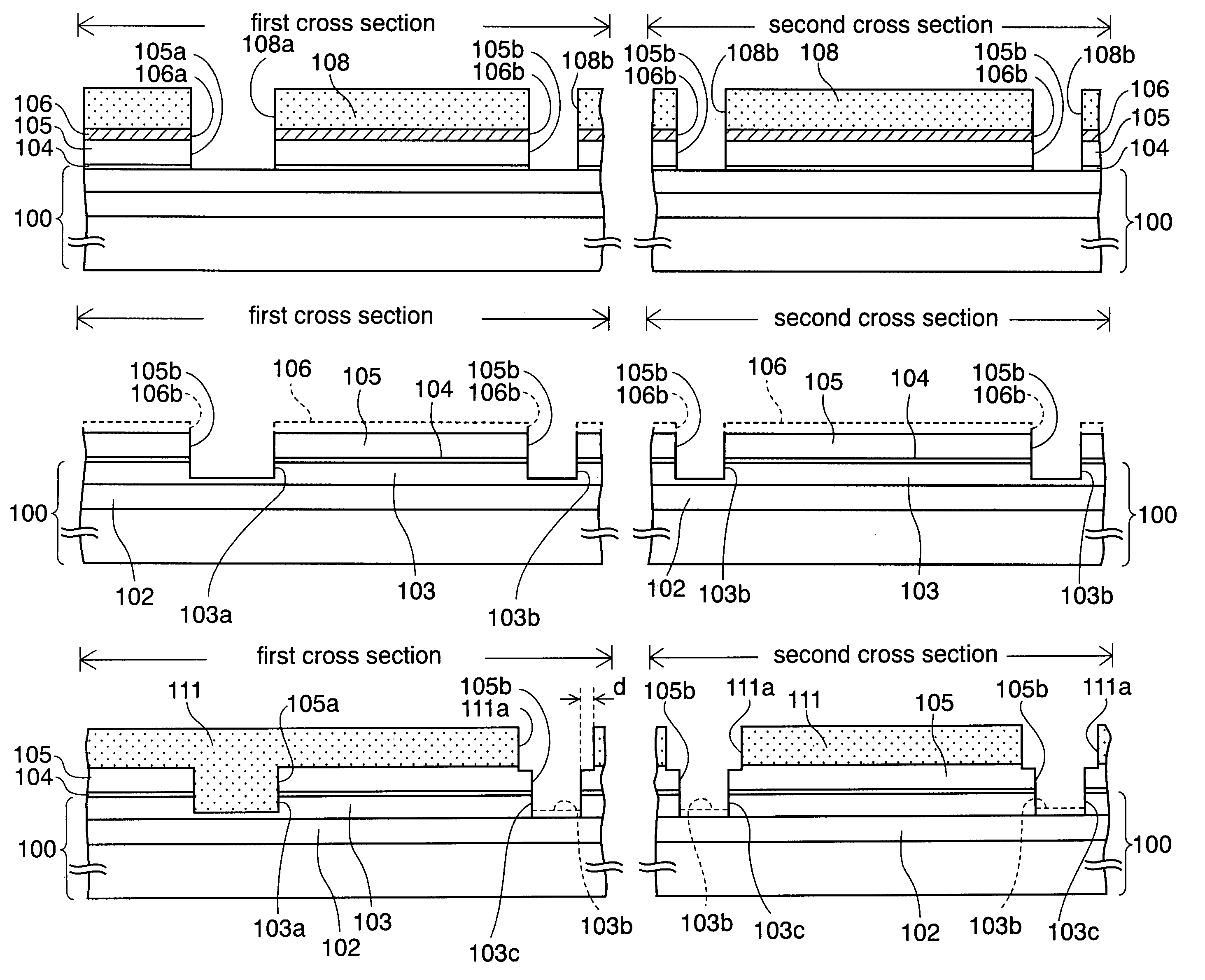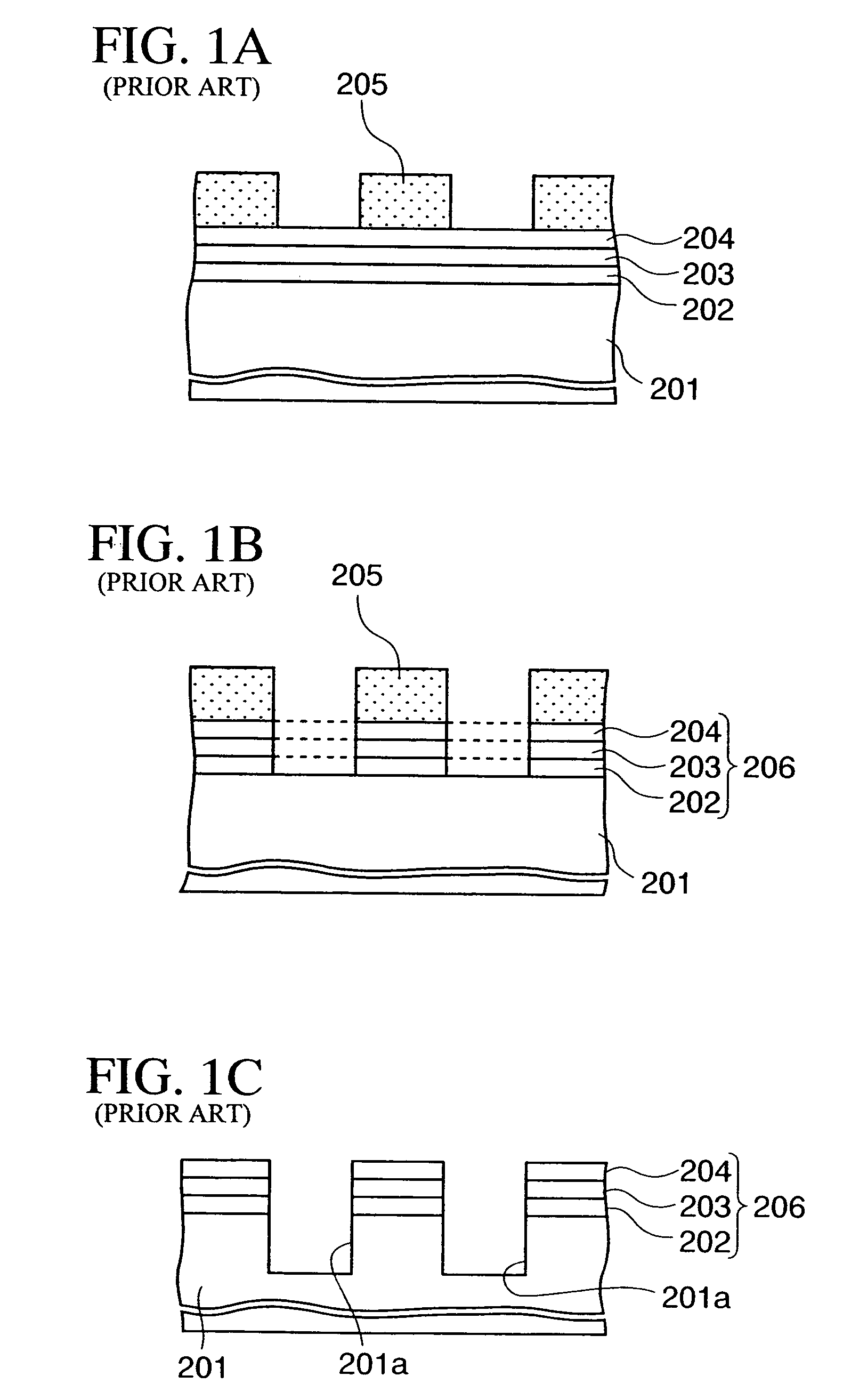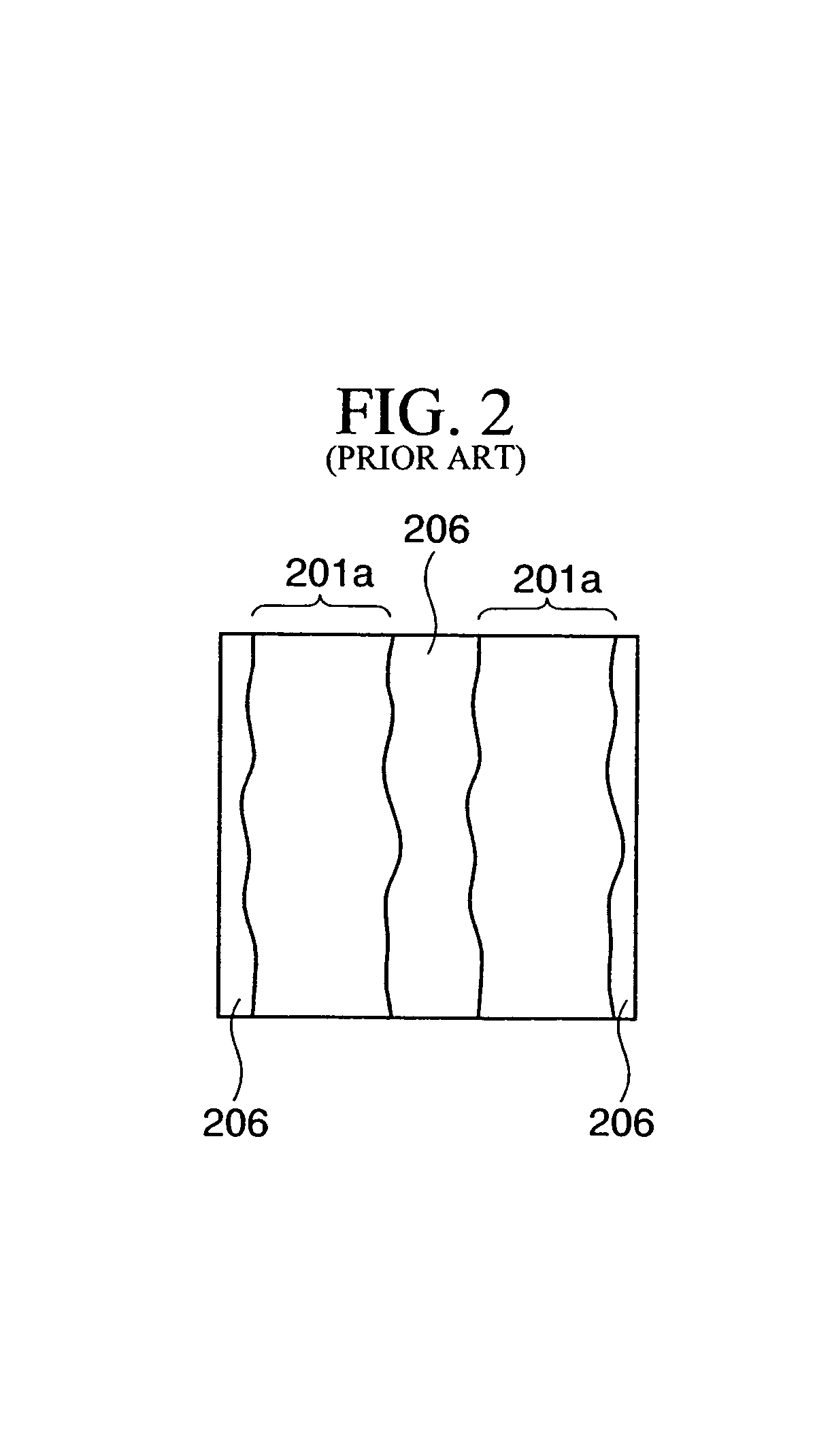Method for manufacturing a semiconductor device
a manufacturing method and semiconductor technology, applied in the direction of semiconductor devices, electrical apparatus, transistors, etc., can solve the problems of trench processing accuracy, inferior alicyclic structure to aromatic ring etching resistance, and inability to find any route for electric charge accumulated in the body to escape, etc., to improve the processing accuracy of the first, simplify the process, and facilitate the alignment between the third window and the fourth opening.
- Summary
- Abstract
- Description
- Claims
- Application Information
AI Technical Summary
Benefits of technology
Problems solved by technology
Method used
Image
Examples
first embodiment
(1) First Embodiment
[0043]FIGS. 3A to 3T are cross-sectional views showing steps in a manufacturing method of a semiconductor device according to an embodiment of the present invention. In each of these drawings, for convenience of explanation, both of a first cross section taken along the gate width direction of a MOS transistor and a second cross section taken along the gate length thereof are shown. Moreover, the semiconductor device has a structure in which n-channel MOS transistors and p-channel MOS transistors coexist, but only the cross section of an n-channel MOS transistor is illustrated below. Furthermore, FIGS. 4 to 7, which are plan views corresponding to respective steps, are also referred to as needed.
[0044]To begin with, steps before the cross-sectional structure shown in FIG. 3A is obtained will be described.
[0045]First, a silicon substrate (not shown) having a thermally-oxidized film, which is to be a buried insulating layer 102, with a thickness of approximately 10...
second embodiment
(2) Second Embodiment
[0139]In the first embodiment already described, the partial trench 103a and the full trench 103c is formed as two types of trenches having different depths in the SOI substrate 100. However, the present invention is not limited to this. As described below, two types of trenches having different depths may be formed in a silicon substrate by applying the method of the first embodiment to the silicon substrate instead of the SOI substrate. Hereinafter, advantages obtained in this case will be described.
[0140]FIG. 11 is a cross-sectional view in the case where p-channel MOS transistors and n-channel MOS transistors are formed on a silicon substrate 130 through a general CMOS process without adopting the first embodiment.
[0141]In order to obtain this cross-sectional structure, to begin with, first and second trenches 130a and 130b for shallow trench isolation (STI) are simultaneously formed to the same depth in the p-type silicon substrate 130. After that, the tren...
PUM
 Login to View More
Login to View More Abstract
Description
Claims
Application Information
 Login to View More
Login to View More - R&D
- Intellectual Property
- Life Sciences
- Materials
- Tech Scout
- Unparalleled Data Quality
- Higher Quality Content
- 60% Fewer Hallucinations
Browse by: Latest US Patents, China's latest patents, Technical Efficacy Thesaurus, Application Domain, Technology Topic, Popular Technical Reports.
© 2025 PatSnap. All rights reserved.Legal|Privacy policy|Modern Slavery Act Transparency Statement|Sitemap|About US| Contact US: help@patsnap.com



